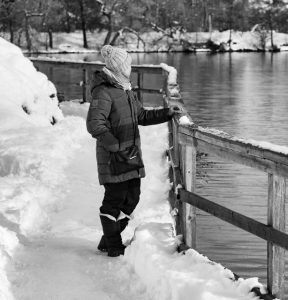 The shorter days of winter can often bring with them the feeling of “winter blues”. Some of us can feel abnormally sluggish, moody, and hopeless. These “winter blues” are common. In fact, millions of people in America experience them each year. There are many stressors that come with the holiday season. Mental health experts believe Seasonal Affective Disorder, aptly called “SAD,” may also be a cause of changes in mood and mental health during the winter months.
The shorter days of winter can often bring with them the feeling of “winter blues”. Some of us can feel abnormally sluggish, moody, and hopeless. These “winter blues” are common. In fact, millions of people in America experience them each year. There are many stressors that come with the holiday season. Mental health experts believe Seasonal Affective Disorder, aptly called “SAD,” may also be a cause of changes in mood and mental health during the winter months.
What is SAD?
SAD is not the same as major depression. Major depression affects people no matter what season it may be. Instead, SAD is a specific type of depression that begins and ends around the same time each year. People who are affected by SAD usually start to experience symptoms during the winter and fall seasons. Symptoms then typically fade away during the spring and summer months. Experts believe this happens because the lack of daylight hours in the fall and winter triggers the brain to create chemicals differently, which changes how you feel.
Signs of SAD include:
- Troubles with falling or staying asleep
- Feeling guilty, anxious, or hopeless
- Low energy, feeling tired all the time
- Changes in appetite – overeating or not eating enough
- Not enjoying hobbies or previously fun activities
- Lack of focus or concentration
- Having suicidal thoughts or often thinking of death
If you think you might be affected by SAD, reach out to your doctor. Your doctor might recommend:
- Getting more sunlight during daylight hours
- Light therapy
- Talking with a mental health provider
- Vitamin D supplements or other medications
If you or someone you know are experiencing suicidal thoughts, contact a doctor or go to an emergency room immediately. You can also call the National Suicide Prevention Lifeline at 1-800-273- 8255.
Want to know more about Seasonal Affective Disorder (SAD)? Check out these resources for more information:


Appropriate topic to be posting. Thank you for sharing
Thank you for this info and reminder to care for ourselves and others. On a “blue” day I like to work on a quilt or other hobby. That helps me be calm and focused; and often brings “light” into my perspective. Yet, there are times when a hobby is not enough. It’s good to know when to reach out and get help.